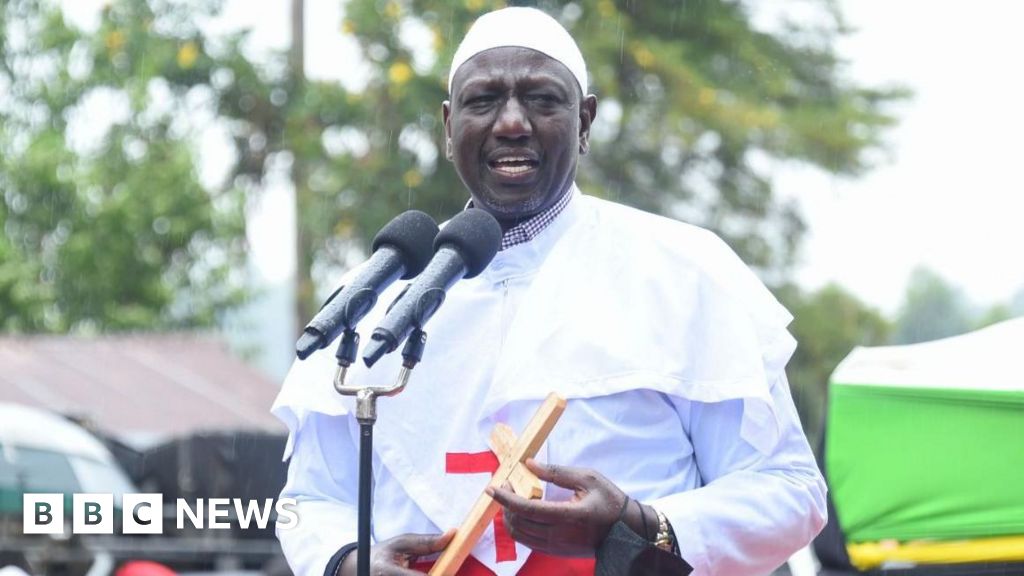At the end of May 2024, the Moseltal bridge made for an unusual sight. Twenty-four bright red trucks had been parked close together in the middle of the wide autobahn bridge at a height of 136 meters (446 feet). The 960-ton load was being used to test how much the 50-plus-year-old structure, now badly worn and damaged, could still withstand. In early 2023, cracks were discovered throughout the steel structure of the nearly 1-kilometer long bridge. The test results are still being evaluated.
The Moseltal bridge is not an isolated case. In Germany, as many as 5,000 of the 40,000 bridges along the country's autobahns are in such poor condition that they urgently need repair. All bridges are inspected regularly and assigned grades based on their structural condition.
More than half of the autobahn bridges were built before 1985, including most of the major valley bridges in former West Germany. As they were designed for less traffic and lighter vehicles, the bridges are now so overloaded that many are showing signs of deterioration. On top of that, too little has been done in recent years to maintain them.
It is not possible to renovate them all at the same time. Federal Transport Minister Volker Wissing has called it a generational undertaking and wants to complete around 400 bridges per year. "We are setting new priorities in order to tackle the modernization of bridges strategically and in the most sensible order," he said after the first "bridge summit" in Berlin in 2022.
 This decrepit bridge over the Rhine-Herne canal has had to be closed for heavy vehiclesImage: /dpa/picture alliance
This decrepit bridge over the Rhine-Herne canal has had to be closed for heavy vehiclesImage: /dpa/picture allianceStrategies for bridge renovation
To do that, planning, procedures, and coordination will need to be simplified to speed up renovation and new construction. An important question when setting priorities: How long can a dilapidated bridge still be used? Setting a speed limit and closing it to heavy vehicles could extend a bridge's life, but even these kinds of restrictions cannot rule out a sudden collapse.
In late 2021, the Rahmede bridge in the state of North Rhine-Westphalia was found to be so badly damaged that it had to be closed due to the risk of collapse. It was finally demolished in 2023 and new construction is underway. The first section is not due to be completed until 2026 at the earliest.
This is a disaster for the region. Before the closure, around 48,000 cars and almost 16,000 trucks crossed the bridge every day. Although traffic is being diverted over a wide area, thousands of vehicles still pass through the small town of Lüdenscheid and the neighboring villages every day.
Residents complain of kilometer-long traffic jams, extreme noise, and pollution. The lack of a bridge also means that alternative routes in the region are congested. As a result, six other bridges are no longer able to bear the load, have been closed as a result or are only open for limited use.
The real reason Germans won't stop speeding
Economic impact of infrastructure problems
The regional economy has felt the impact. Companies are harder to reach, commutes are longer, and businesses are suffering — including retailers and restaurants along busy downtown routes, where too much traffic has driven away customers.
In 2022, the German Economic Institute (IW) presented an "economic damage assessment," which found that companies in the region around Lüdenscheid will see a 2% reduction in their workforce. And the economy will shrink by €300 million ($326 million) a year.
"The negative effects of the bridge closure will add up to at least €1.8 billion over the next five years," the study said. "Every year that the bridge is completed earlier, hundreds of millions of euros could be saved."
But speeding up construction is not so simple. Large infrastructure projects often require years of advance planning. And in Germany, there are regulations that require precise and often lengthy inspections, especially for large projects.
Planning and public participation
In the planning approval process, the concerns of neighboring communities also have to be considered, as do environmental restrictions. The idea is that the more people are involved in the project, the more likely it is that the public will agree to the large infrastructure projects.
But this lengthens projects considerably, even by international standards. One example is the construction of the Fehmarnbelt tunnel under the Baltic Sea between Germany and Denmark. On the German side, the authorities in the state of Schleswig-Holstein received 3,100 objections and comments that filled 41 binders. In Danish public hearings, there were only 42 comments from authorities, companies, and citizens.
The German government is trying to speed things up. A law was introduced at the end of 2023 that will eliminate the need for permits and environmental impact assessments for bridges that are being widened to add lanes as part of renovations. According to reports, this will cut the planning and approval period in half.
 The town of Lüdenscheid is suffering massive traffic jams because of an autobahn bridge closureImage: Rüdiger Wölk/IMAGO
The town of Lüdenscheid is suffering massive traffic jams because of an autobahn bridge closureImage: Rüdiger Wölk/IMAGOConstruction accelerated
But there is also a lack of money. As of 2025, the German government will have to make massive cuts to comply with the debt brake enshrined in the constitution. At the same time, inflation has driven up the price of construction materials, and labor costs have also risen.
This year, €4.6 billion has been earmarked for the renovation of autobahns and connecting bridges. According to current plans, that figure will rise to €5 billion per year as of 2025. However, the state-owned Autobahn GmbH has already announced that an extra €5.5 billion will be needed for the years 2025 to 2028. What's more, current budget discussions have identified the Transport Minister's budget for 2025 as one of the areas where savings can be made, and it has been leaked that Wissing also plans to cut funding for the renovation of autobahns and bridges.
The German Federal Court of Auditors thinks this is wrong. In January 2024, it warned that the federal government was in danger of falling far short of its objectives for the renovation of bridges. It said that bridges should be given priority, otherwise further closures would have to be expected.
Wissing thinks he has a way out of the predicament: A new infrastructure fund that the Free Democratic Party (FDP) wants to set up with the help of private capital. But investors expect returns. Will drivers then have to pay to use a bridge? As of now, there are no concrete plans for this fund.
This article was originally written in German.
While you're here: Every Tuesday, DW editors round up what is happening in German politics and society. Sign up here for the weekly email newsletter Berlin Briefing.

 5 months ago
21
5 months ago
21









